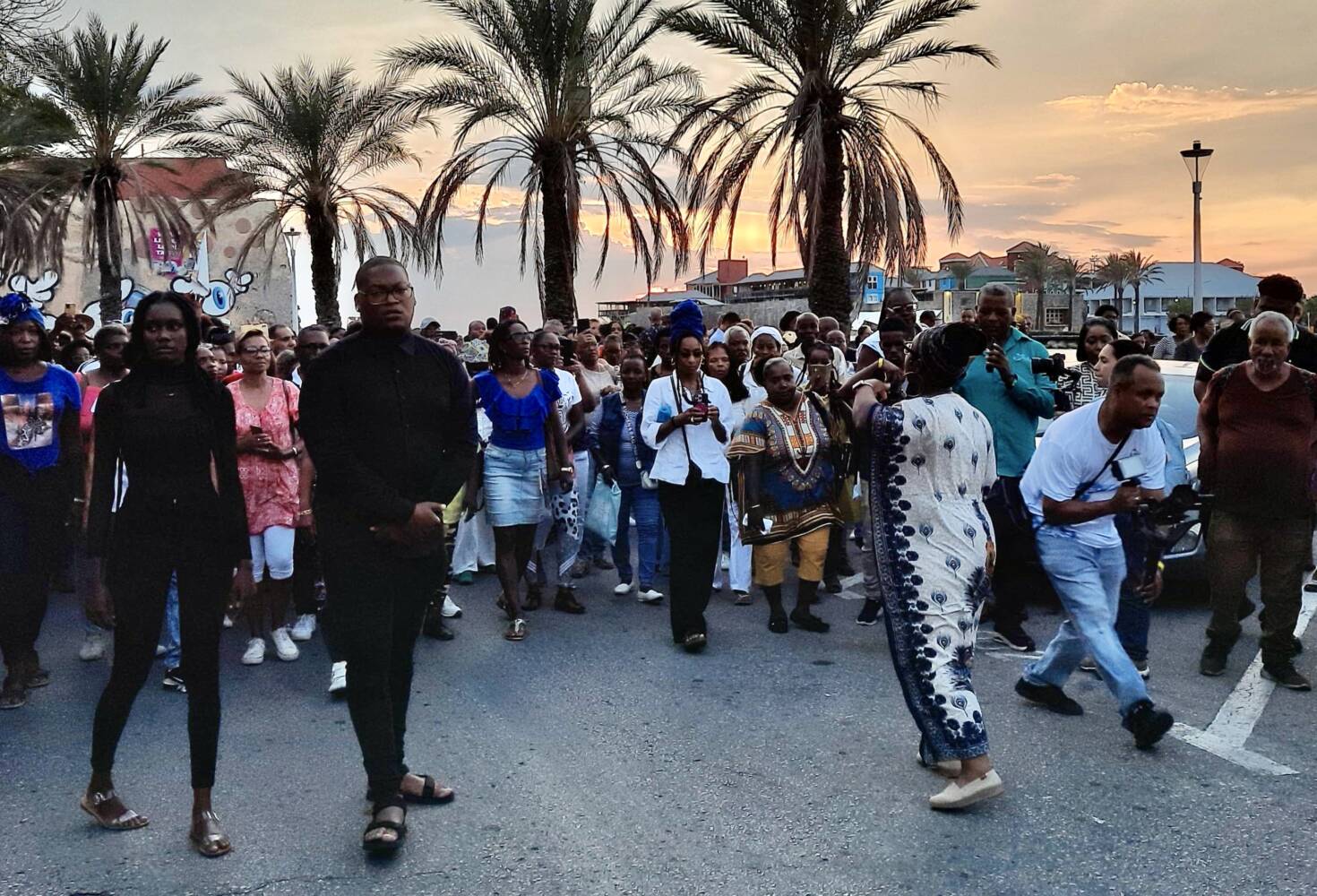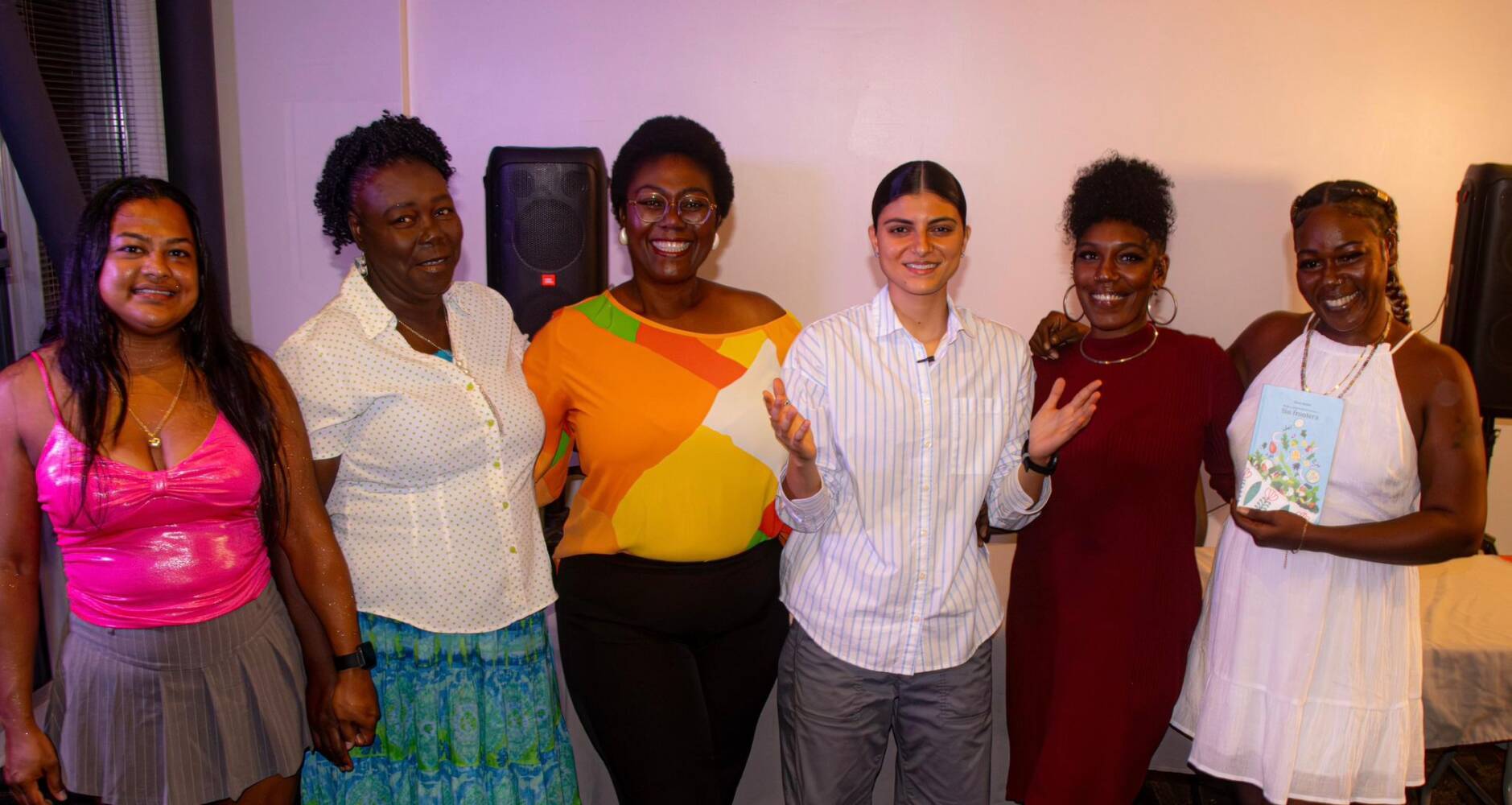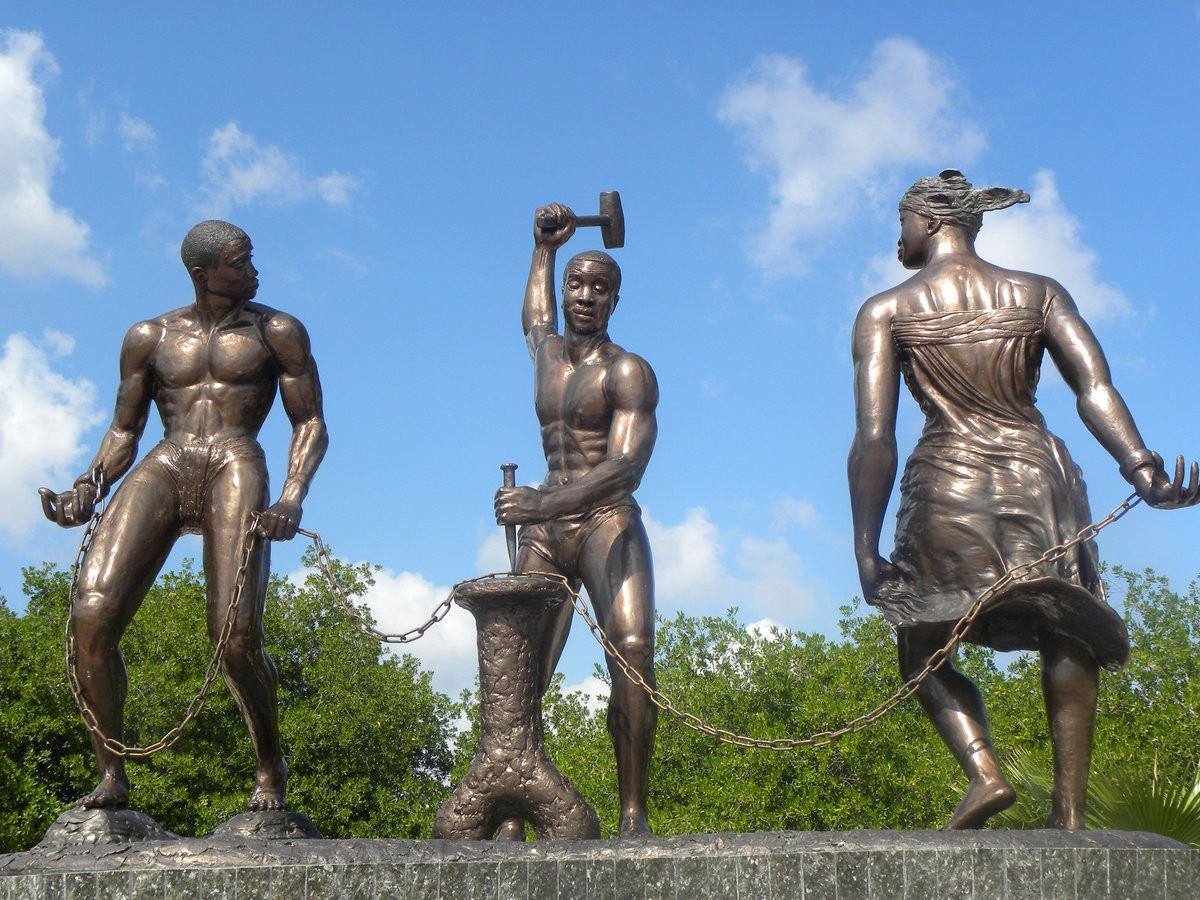It is quiet on the square behind Fort Amsterdam. The people’s gaze is focused on former Member of Parliament Jeser El Ayoubi. He’s up there on the fort walls. “Today, October 3, 2023,” he says, “228 years after the murder of Tula and Carpatta, is the day on which the Dutch government formally rehabilitates Tula.”
Just before that, the group was an eyewitness to the reenacted execution of the leader of the slave revolt in 1795. Here, ‘outside the walls’, behind Fort Amsterdam, Tula was gruesomely killed on the orders of the then Dutch administrators.
“People were publicly executed in squares outside the city walls at that time,” says Charles do Rego, who has been doing historical research since the early 1970s. “That happened at the end of the afternoon.” For Do Rego, the rehabilitation from The Hague is ‘a crowning achievement on a long road’. “Curaçao itself already did this in 2010.”
Horrible torture
Exactly at 5:50 p.m. there is the piercing sound of a traditional wind instrument: the ‘kachu’. Three executioners appear on the scaffold with the two leaders of the slave revolt.
The performance is a terrifying representation of what was done to the freedom fighters. The bloody clothes. The mangling of his body on the turning wheel.
Silently, the executioners tie Tula to a cross. Silently they break all his bones with an iron bar. Then the torches, the flames that burn his face. The bone-chilling screams.
Some people can’t stand it and turn their heads away. A shiver runs through the crowd as one of the executioners cuts off Tula’s head. This was ‘exhibited on two stakes’ for some time in 1795.
“It’s really sad what they did to this man,” says a middle-aged woman. “I never heard anything about that at school.”
Then a singer starts a mourning song. The tour to Parke Lucha pa Libertat, the park of the freedom struggle, near Rif begins. The crowd slowly starts moving.
Just as Tula’s followers swelled from fifty to thousands of enslaved men, women and children in 1795, the number of participants in the walk grew to hundreds. It is a colorful group. Parents and children, ministers and members of Parliament, artists and performers.
‘Let’s put on lights’
The procession continues quietly from Punda over the pontoon bridge to Otrobanda. From performance to performance. “Ban, ban pone lus,” Tambú singer Elia Isenia sings on the bridge. And a little further on a group of children led by Roland Colastica: ‘Risibí mañan, liber i felis’. (Receive tomorrow, free and happy)
“A great historical moment,” says a woman walking along. “It is very valuable. You don’t want to repeat the mistakes you made back then. That pain. You have to acknowledge the past in order to move forward.”
Then over the Pater Euwensweg. In 1795, this was still water. Tula’s body was taken by boat to that spot on the coast, near Rif, where the monument ‘Desenkadená’, break the chains, now stands.
Exactly here, where the boat carrying Tula’s body must have sailed, the wind suddenly rises. The palm trees sway back and forth, the sky is gray.
In this way, young people play the bigwigs who looked down on the population at the time. Today’s boys and girls stand on stilts and look condescendingly at ‘the mob’ that walks by.
“Very nice,” says a man with a hat and a folding bicycle. He became emotional at the reenactment of Tula’s beheading. “I had to shed a tear. But things must be better worldwide. It’s really abnormal the way we treat each other.”
Storm and rain
Just a few hundred meters before the turnoff to Rif, a folkloric dance group dances a waltz. The band plays from a float. Bright lights illuminate the street. Loud applause when the dancers ask people to dance.
It’s almost half past seven: the wind is blowing even harder. On the street, actors unperturbedly enact a play about freedom: ‘a united people is in charge!’ The audience follows the rhythm: ‘Un pueblo uní ta manda!’
And then it happens: rain. Here, where Tula’s body sailed along the coast, the rainwater seems to come from all sides. There is thunder and lightning. As if nature has it’s say tonight.








